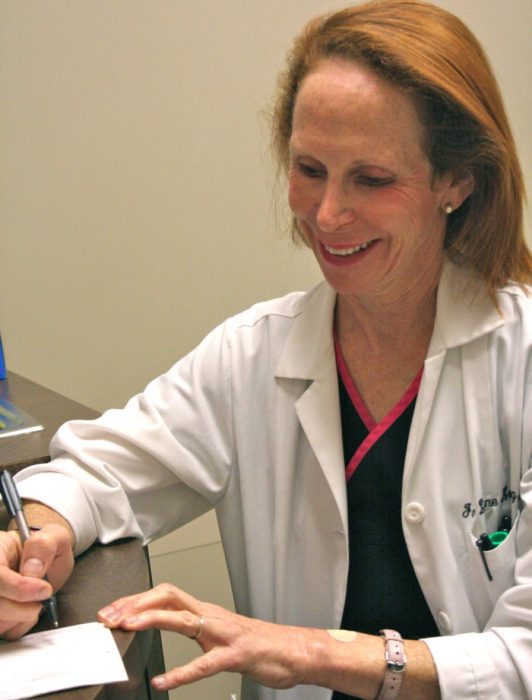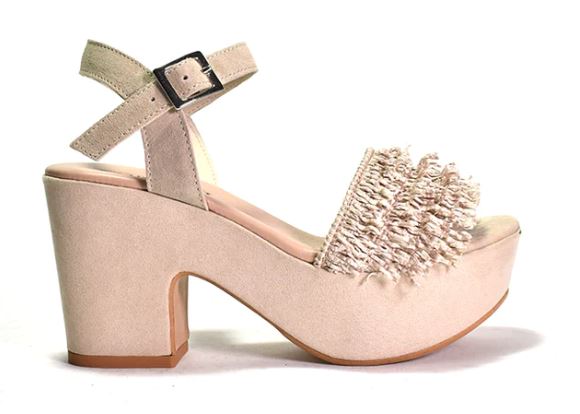Treating Hyperpigmentation and Melasma: Part 1

Today, Dr. Jo will answer the following question submitted last week by Laura Gail. This is part 1 of what will be several posts.
| Hey Jamie, I would love to know what Dr. Jo recommends for getting rid of sun damage on the face like sun spots and discoloration. I think I may have some of the pregnancy mask right now but I have noticed a lot more discoloration in my face lately. Is it something as simple as a chemical peel or does it take some kind of laser surgery? Thanks! |
Facial hyperpigmentation is one the most common things dermatologists treat, but it is also the trickiest. This plagues so many women worldwide that treatment has become big business. There are many ways to tackle this, but what is best for one patient might not be best for another. There are so many treatments, with variable safety profiles, that we will attack this topic in more than one discussion.
Melasma is the patchy brown, sometimes grayish, pigmentation that some refer to as “the mask of pregnancy.” One does not have to be pregnant for this to occur. The areas most commonly affected are the forehead, above the lip, the sides of the face, and sometimes the cheeks. There is no single cause, but this pigmentation seems to be stimulated by hormonal changes and sun exposure; however, any inflammation or irritation can make it worse.
Avoidance is the first step toward alleviating the problem of hyperpigmentation. As we can not always change the status of our hormones, we must focus on other ways to prevent or at least diminish this pigmentation. SUNSCREEN and SUN AVOIDANCE are of utmost importance. You should also avoid rubbing the affected area and applying any product that causes irritation. By minimizing the problem in the first place we can make it much less apparent and much easier to treat.
The mainstay of treatment and what I usually try first is topical therapy (creams). These can be effective and cost efficient, and usually involve no down time. Since there are myriad creams from which to choose within a broad price range, this is where it pays to be savvy about the products that are available.
Today’s discussion will focus on the most commonly used cream for hyperpigmentation, hydroquinone(HQ). This has been the key player in treatment of hyperpigmentation for many years. 1% -2% HQ is available in most parts of the USA over-the-counter, while 4%-6% is supposed to be available by prescription only. There is some controversy as to the safety of HQ, especially when used long-term.
My personal opinion is that HQ’s are safe when used properly and under a doctor’s care. However, I do not have my patients use HQ for more than two or three months at a time, and I do not prescribe this for pregnant or nursing moms.
Two to three months should be long enough for this drug to have had its maximum effect. After this period of time, I prefer to attack the problem with different medications. Some other prescription products that help with pigmentation include azelic acid, tretinoin, tazarotene, adapalene, and hydrocortisone.
Over-the-counter products are plentiful. Those that come to my mind first are Kojic Acid (may be close to HQ in effect), Lactic Acid, Glycolic Acid, Emblica, Licorice, Soy, Arbutin, and Coffeeberry. Some of these, especially in combination, can be very helpful and are preferred by those that want to avoid HQ or who live somewhere that it is not readily available by prescription.
Because some products like HQ’s and retinoids (tretinoin, tazaratene, adapalene) can cause unwanted inflammation, combination creams have been compounded. They often include a retinoid, a HQ, and a mild topical steroid to decrease inflammation. These “triple creams” are usually my first choice for starting treatment, as they seem to be the most effective early treatment. They work quickly with minimal side effects ,because they contain two medications to decrease pigmentation and one to minimize inflammation.
If creams alone do not achieve the desired results one can use chemical peels (TCA and glycolic acid), IPL (intense pulsed light) therapy, and laser therapy. Some new research shows that a combination of topical creams and other modalities, such as peels, can significantly improve hyperpigmentation over a 12 week period.
Next week I will go over some of the products that are out in the market that you might choose to treat this problem.





Well, your pregnancy hormones may play a part in that; I don’t know for sure. I will ask her. You might try 50 spf or even zinc oxide (and a good hat”.
p.s. Her answer made so much sense because I noticed one big spot showed up on my cheek after our recent visit to the beach. I wore a ton of sunscreen but that didn’t seem to deter it.
Great answer – thanks so much! Unfortunately, I won’t be able to take advantage of any treatment for a while now since I plan on trying to nurse for a year. But it’s good to know what my options are! Thanks so much!